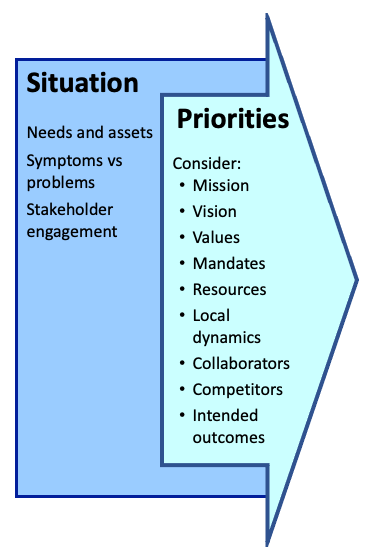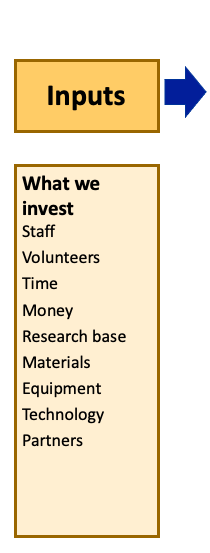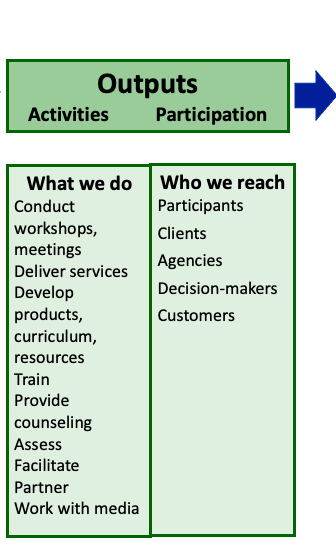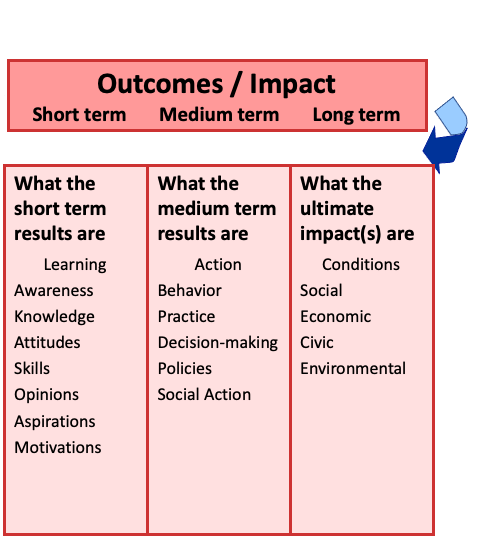Home » Enhancing Program Performance with Logic Models » Section 1: What is a Logic Model? » 1.7: Full Logic Model framework
1.7: Full Logic Model framework
Let’s now look at a complete logic model. This framework includes six main components. Over the next few pages of this module we’ll look at each of these components in more detail.
You have seen how a logic model can grow from a simple input — output — outcome graphic to a more complete logic model: one that includes the major components of good program development. Now we are continuing to build the model to add three more components.






First, we have added the situation — the environment in which a problem or an issue exists and from which priorities are set to direct the programmatic response. Then we have the inputs, outputs, and outcomes that you are already familiar with. Finally, there are two additional components at the bottom: assumptions and external factors.
Over the next few pages of this section, we will look at each of these components in more detail.
You can print out a copy of the logic model to follow along.




